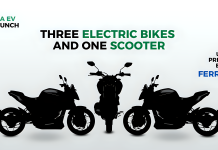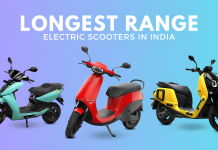
Q1. With increasing electric mobility growth what opportunities do you see for EV battery design software?
Currently, almost 3% of two-wheelers in India converted to EVs last year. This year it is expected that around 6% will be converted to EVs i.e. almost 8-10 lacs Lithium batteries will be sold in the market. With such huge volumes, considering the safety and long-term performance of the Battery pack, new OEMs as well as traditional OEMs are upgrading their packs with Battrixx. To reduce the time, Battrixx also uses various Design and Simulation software to make the Design the first time right in Safety and Performance before starting the Proto Development and Validation. This is helping the industry to cater to twice and thrice the demand YoY. In the future, the demand for these designs and simulation software will grow at the same rate as the EV Growth rate.
Q2. What is your outlook for battery swapping policy and market trends transitioning towards EV charging infrastructure?
The biggest challenge in today’s EV industry is that there is no standard size of batteries. Every OEM is changing its battery sizes continuously. Do you think Battery Industry can go ahead like this with such a huge volume? How you will serve your customer in different sizes? Definitely, you need a standard size at least the external. Battery-swapping initiatives will definitely standardize and streamline India’s EV segment to a great extent. It will act as an impetus to push the EVs more into the market. For Customers, battery replacement should be an easy and hassle-free experience. Since the government has taken an interest in the EV sector, there will be more initiatives coming in to ease and push India’s Electric Vehicle market.
We have been producing IoT-enabled lithium-ion batteries with Cloud-based intelligent battery products and services. It includes data analytics, BMS, connected swapping stations, and charging stations, among others.
Moreover, with our end-to-end EV Charging Management Solution (CMS), EV charging operators will be able to manage and control their assets easily, where drivers and charging stations interact through a Cloud-based operator portal with customized dashboards.
Q3. Why is battery safety essential to EVs and what new chemistries are being developed as protection against catching fire?
Ensuring battery safety is crucial in electric vehicles to prevent potential battery fires that could endanger the lives of drivers and passengers. Lithium-ion batteries are currently in high demand due to their advanced quality, safety, energy and power density, and durability. However, incidents of fire can still occur in electric and traditional internal combustion engine vehicles due to short circuits in electronic components or wiring harnesses.
To improve battery safety, manufacturers should adopt a “no-compromise attitude” towards battery safety and consider additional safety tests that can be performed. Smart devices can also be installed in batteries as safety gadgets and multiple layers of intelligence can be built-in to diagnose and predict abnormal battery performance. Additionally, research and development of new battery chemistries such as solid-state batteries, high nickel and silicon content batteries, lithium-sulfur batteries, lithium-metal batteries, lithium-air batteries, sodium-ion batteries, aluminum-ion batteries, magnesium-ion batteries, and zinc-air batteries are being explored to improve the safety and performance of electric vehicle batteries.
Overall, battery safety is critical in electric vehicles, and manufacturers should prioritize additional safety tests, the use of smart devices, and advancements in battery chemistry to prevent potential battery fires and ensure the safety of drivers and passengers.
Q4. According to you, how the National Electric Mobility Mission Plan and other initiatives may help reduce emissions and oil dependence.
The government of India’s mission is to convert 30% of vehicles to EVs by 2030. According to an independent study by Council on Energy, Environment and Water (CEEW) India could save on crude oil imports worth INR 1 Lakh crore (USD 14 Billion). India’s oil import bills could reduce by 15% by around INR 1.1 Lakh crores in 2030 alone if EVs occupy 30% share in new vehicle sales by 2030.
National Electric Mobility Mission as well as an increase in Solar, Wind Energy kind of renewable energy models will definitely help to reduce emissions and Oil dependence in India.
Just for example, as per EESL Data, Electric Vehicles deployed in Delhi have completed 2 crore kms on the road. Thanks to this, there is a reduction of 500 kg of particulate matter emissions. Moreover, about 3,573 tonnes of carbon emission is claimed to have been avoided and since the day of deployment of EVs, Rs 8.6 crore has been saved in terms of monetary value. In addition, the 2 crore e-kilometers have also resulted in 13.3 lakh liter of fuel-saving.
Q5. What are your suggestions for self-dependent manufacturing indigenously?
Migrating to EVs was the first step toward Green Mobility. Initially, EV OEMs in India were getting readily available Battery packs from China. But now almost 90% of battery packs are manufactured in India, importing mainly Lithium-ion cells from China and Korea.
Now, under the Advanced Chemistry Cell (ACC) Battery Storage Programme in India around 10 companies in India have invested to start Lithium Cell Manufacturing Plants in India through PLI scheme.
Further, under the India Energy storage mission various initiatives are in place to ensure raw materials availability for Lithium-ion cell making. Also, many institutes in India like IITs are researching Advance Chemistry Cells. If we can connect these institutes with Cell manufacturing, Cell Testing Labs, Battery pack Manufacturing, or EV OEMs, we can build Better Energy storage solutions and create self-dependent manufacturing indigenously.






